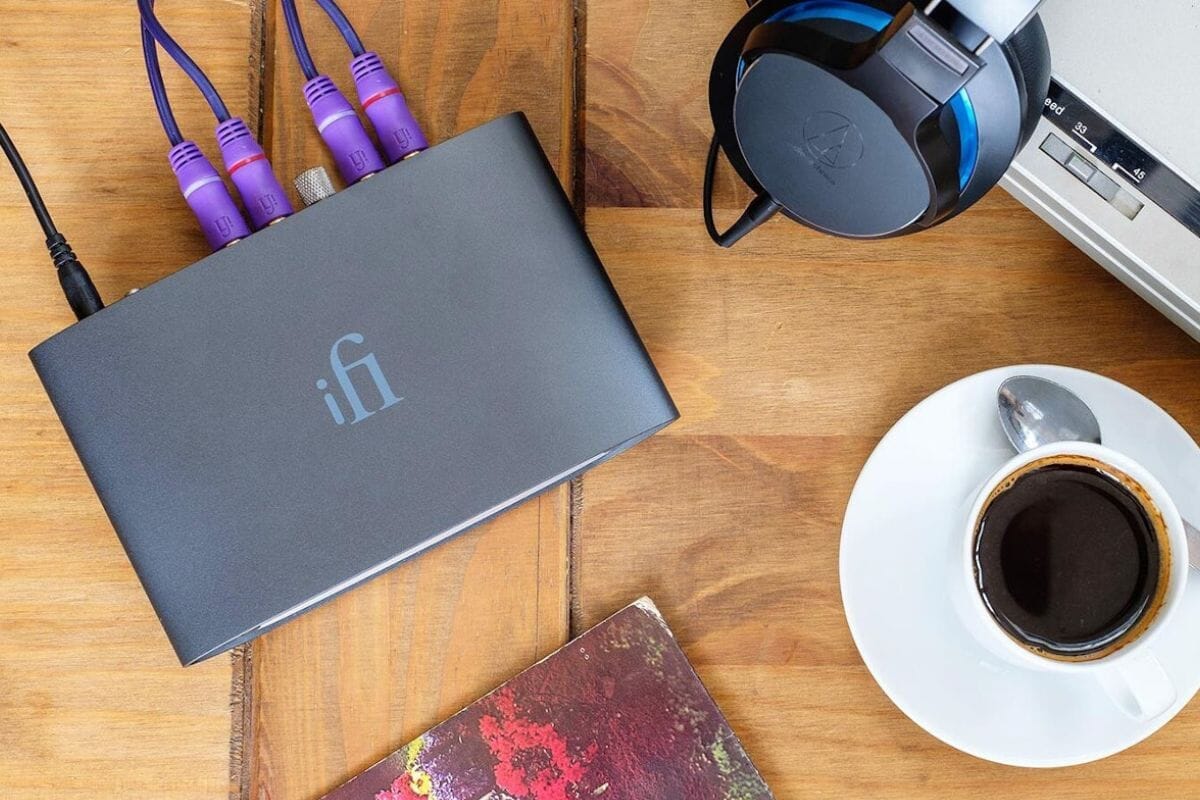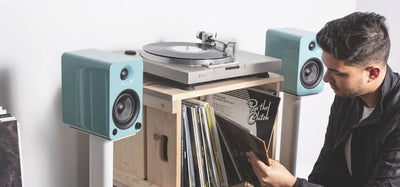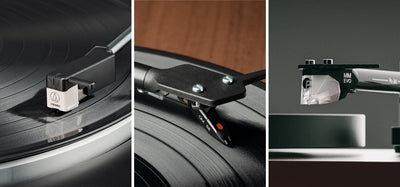If you’re getting into vinyl for the first time and you’re looking at various turntables and components you’ve probably seen the term “preamp” come up a few times.
This is a vital component to a record player setup but it doesn’t need to be complicated.
This short guide will teach you what a turntable preamp is, why you need one and the different types available.
What Does A Turntable Preamp Do?
The signal coming from a turntable cartridge is around 1000 times lower than the signal from a CD player or media streaming device.
So if you connect a turntable to your powered speakers without a preamp your music will play very quietly.
That’s where the preamp comes in.
Music from a turntable is effectively amplified twice.
First the preamp boosts the signal from the cartridge to a level suitable for your amplifier.
Next your amplifier or powered speakers will amplify the sound for you to enjoy.
Does My Turntable Need A Pre-Amp?
The short answer is yes.
Every turntable will need some form of pre-amplifier to boost the signal to a level that your speakers or amplifier can play.
However you may not need to buy a separate pre-amp.
There are a lot of turntables, powered speakers and amplifiers with built in pre-amps so before you buy a separate one you’ll first want to check the specs of your turntable and speakers.
If you already have a turntable and aren’t sure if you have a built in preamp or not you can always plug your turntable into the Line In of your powered speakers and try it out. If it plays as expected then you have a built in preamp.
However if it plays very quietly then you’ll need a separate preamp.
Read More: Do Record Players Need Speakers?
Types Of Turntable Preamp
There are three main types available:
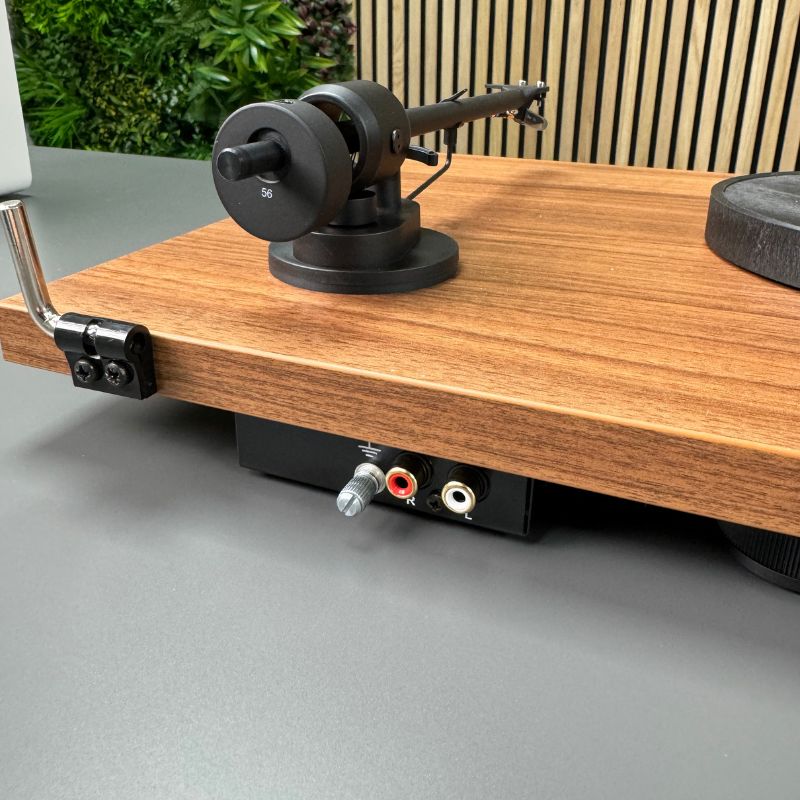
1. Built Into Turntable
A lot of entry to mid level turntables will often feature a built in pre-amplifier.
This means you can directly connect the turntable to any stereo amplifier, powered speakers, Bluetooth speaker etc. without requiring any additional hardware.
You’ll see this in the product specs as a preamp, phono stage or phono EQ.
The picture above is a Pro-Ject E1 Phono, this can be directly connected without any additional equipment.
Sometimes these preamps will be switchable so if you should choose to you can bypass it and connect to an external preamplifier for better sound quality.
On the E1 Phono there's a switch to the side of the connections that lets you turn the pre-amplifier on or off.
Our top 5 turntables with built in preamp are;
- Audio-Technica LP60X
- Audio-Technica LP60XBT (with Bluetooth)
- TEAC TN-175
- TEAC TN-180BT (with Bluetooth)
- Pro-ject E1 Phono
These types of turntable are really popular as they're plug & play, easy to setup and don't require any additional boxes.
In most instances they provide a more than adequate sound quality so are a great option for casual listeners.
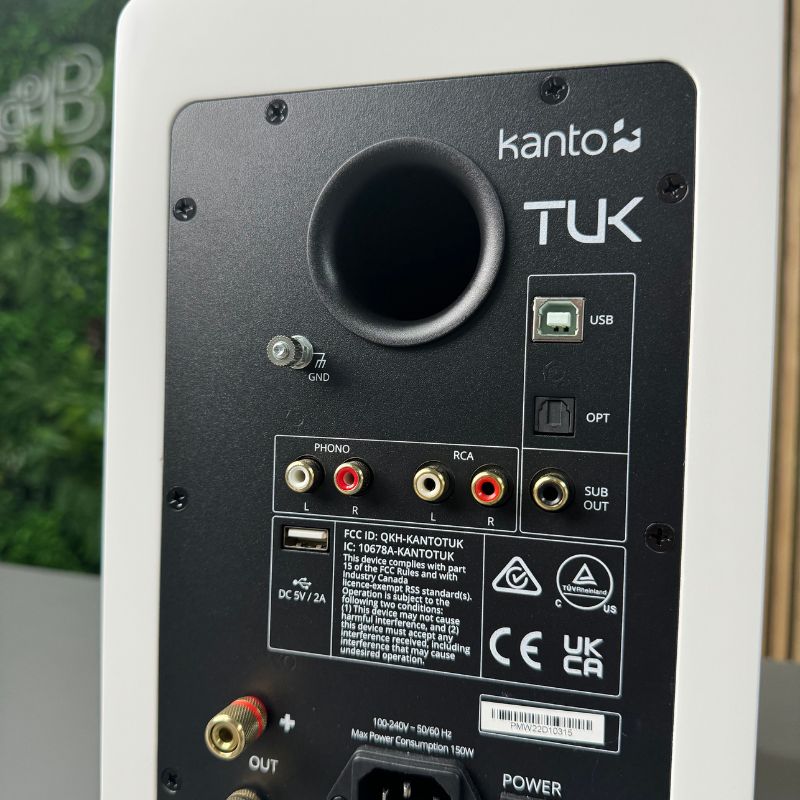
2. Built Into Speakers / Amplifier
Some powered turntable speakers and amplifiers will feature a phono preamp.
You can simply connect your turntable to the phono input.
From our testing the pre-amplifiers built into powered speakers such as the Kanto Audio TUK are noticeably better than those built into the turntable itself.
In our test with a Pro-Ject E1 Phono + Kanto Audio TUK we could easily hear a clear improvement in depth, volume and clarity when switching from the turntables pre-amplifier over to the speakers pre-amplifier.
Not all speakers have a built in pre-amplifier so look for a "Phono" input or a "Phono / Line" switch next to the RCA inputs.
Remember, if your turntable also has a built in pre-amp then ensure you turn it off (assuming it’s switchable) and use the speakers one instead for best sound quality.
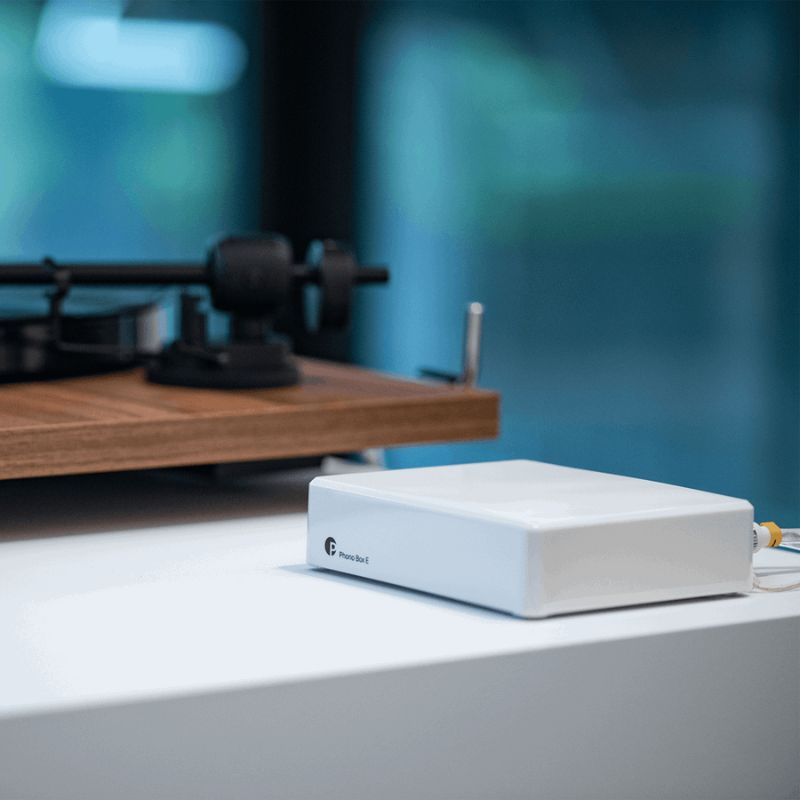
3. Separate Preamp
A standalone preamp such as the Pro-Ject Phono Box E is required when your turntable does not have a built in pre-amp.
You can also use a standalone pre-amplifier to improve the sound quality of any turntable as a standalone amp is going to better quality than anything built-in!
This device connects between your turntable and your amplifier or powered speakers.
If your turntable has a switchable built-in preamp then you can still use a standalone one for improved sound quality by turning the built-in preamplifier off.
This route is best for;
- Turntables that don't have a built-in pre-amplifier
- People who want the best sound quality possible
How To Connect A Turntable Preamp
Now you know what a turntable pre-amplifier is and why you need one, connecting it all up is the easy part.
Whether your pre-amp is built into the turntable or speakers, or if you’re using a separate pre-amp they’ll simply connect up using audio cables.
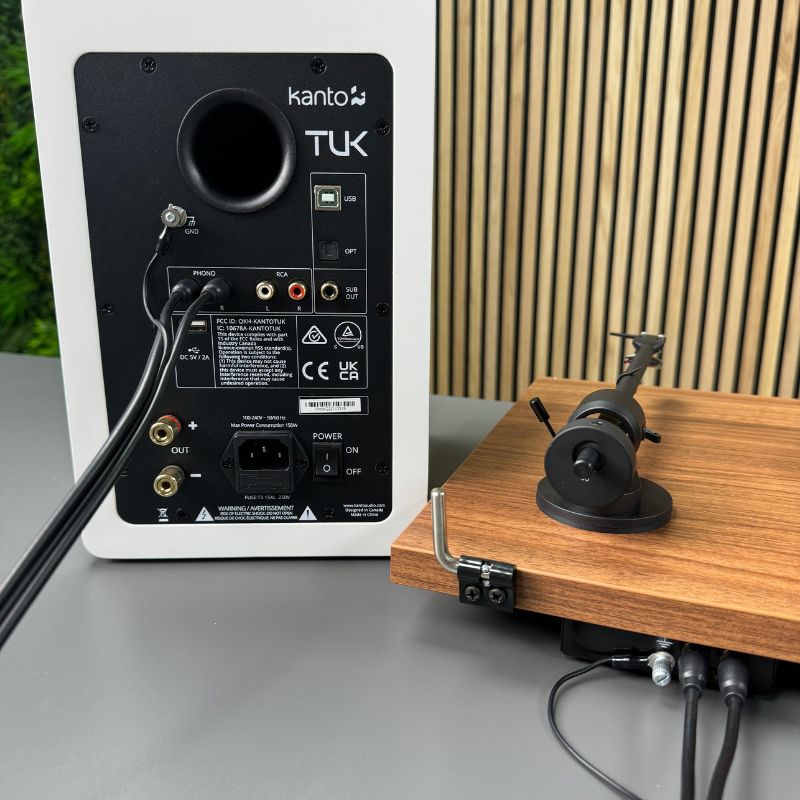
Built-In
For a built in preamp you’ll most commonly see a red and white RCA jack, or a 3.5mm audio often found on Audio-Technica’s LP60X range.
Use an RCA or 3.5mm jack audio cable to connect your turntable into the “Line In” of your powered speakers or amplifier.
If you're using the turntables built in pre-amplifier then you'll plug into the "RCA" or "Line" input of your speakers.
If however you're using the pre-amplifier of your active bookshelf speakers or amplifier then you'll plug into the "Phono" input and ensure that the turntables pre-amplifier switch is set to "Off" or "Thru"
Separate
When using a separate preamplifier you’ll first need to plug it into a mains socket as they require their own electrical supply.
Connect your turntables output to the “input” of the preamp using an RCA audio cable.
Next you can connect the preamplifier to your powered speakers or amplifier using another RCA audio cable from the output of the amp to the input of your speakers.
Read More: Will A Pre-Amp Make My Turntable Sound Better?
Final Thoughts
Remember that your system will only be as good as the weakest component.
A good quality turntable and powered speakers can benefit from a preamp upgrade.
However for most casual listening the built in preamps are more than adequate and will provide exceptional sound quality as standard.
Most of our turntables and our turntable with speaker bundles all feature a built in preamp making the system plug & play.
If you already have a turntable and you’re wondering “Why is my turntable volume so low?” then now you know why, you need a preamp or to make sure the built-in one is switched on.

